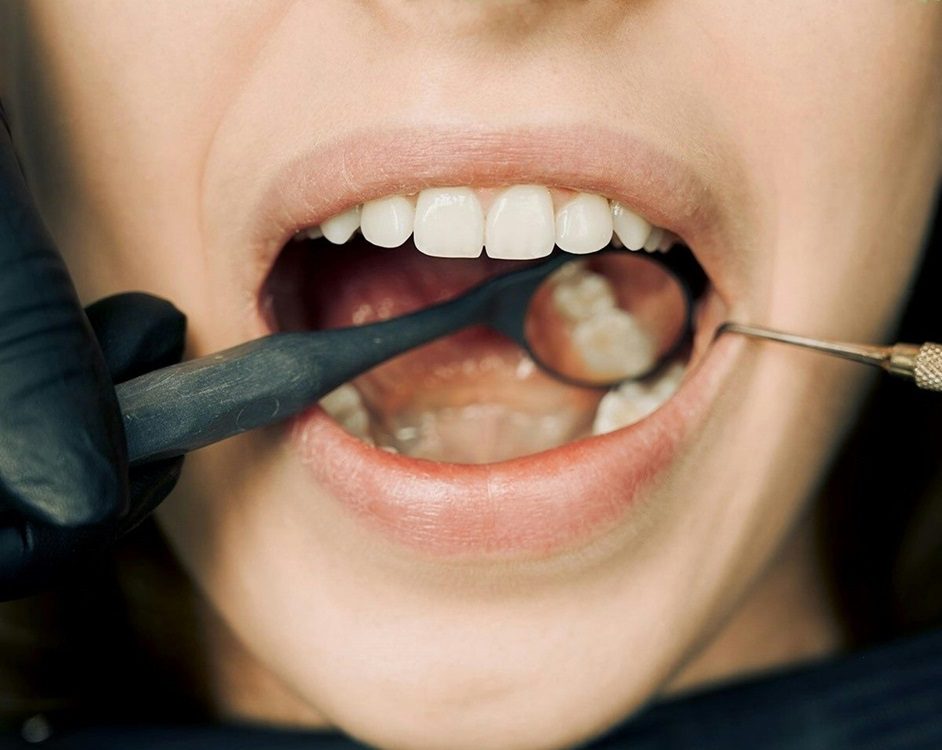If you’ve noticed a hole in your gums, you may be wondering about the causes and treatment options available. While it’s not a common occurrence, a hole in the gums can be a sign of underlying dental issues that require attention.
In this comprehensive guide, we will explore the causes, symptoms, and various treatment options for a hole in gums. So, let’s dive in and learn more.
Understanding the Hole in Gums
A hole in the gums, also known as a gum pocket or gum hole, refers to an area of the gum tissue that appears hollow or indented compared to the surrounding healthy tissue.
It can vary in size and shape, and it is often a result of gum disease. Gum disease is primarily caused by the buildup of bacteria and plaque in the mouth, leading to inflammation and damage to the gums.
Causes of a Hole in Gums
Several factors can contribute to the development of a hole in the gums. The most common cause is gum disease, which can be categorised into different types:
Gingivitis
This is the initial stage of gum disease and is characterised by inflammation and swelling of the gums. If left untreated, gingivitis can progress to more severe gum disease.
Periodontitis
A more advanced form of gum disease, periodontitis occurs when the infection spreads below the gum line, leading to the formation of pockets and bone loss.
Necrotising Periodontal Disease
This rare form of gum disease is often associated with a weakened immune system and can result in tissue death and the formation of gum holes.
Other Health Conditions
Certain systemic diseases such as diabetes, heart conditions, and respiratory issues can also contribute to the development of gum disease and gum holes.

Symptoms of a Hole in Gums
The symptoms of a hole in the gums can vary depending on the underlying cause. However, some common signs to watch out for include:
- Swollen and inflamed gums
- Receding gums
- Bleeding gums
- Tooth sensitivity or loose teeth
- Bad breath
- Pain or discomfort while eating
- Formation of ulcers or lesions in the mouth
If you experience any of these symptoms, it is essential to consult a dentist for a proper diagnosis and treatment.
Treatment Options for a Hole in Gums
The treatment for a hole in the gums will depend on the underlying cause and the severity of the condition. We recommend consulting with your dentist to discuss the best treatment option for you. Below are some common treatment options available:
1. Deep Cleaning (Scaling and Root Planing)
Deep cleaning, also known as scaling and root planing, is often the first step in treating gum disease. This procedure involves removing plaque and tartar from above and below the gum line.
Scaling removes the buildup on the teeth, while root planing smooths the tooth roots to promote gum reattachment. Local anaesthesia may be used to minimise discomfort during the procedure. Multiple appointments may be needed for advanced cases of gum disease.
2. Pocket Elimination Procedure
In cases where gum pockets or deep gaps have formed between the gums and teeth, a pocket elimination procedure may be necessary.
This surgical treatment involves folding back the gum tissue to remove bacteria and plaque from the pockets. The gum tissue is then reattached to the teeth, reducing the depth of the pockets and promoting healing.
3. Gum Grafting
Gum grafting is a procedure used to treat receding gums and fill in gum holes. It involves taking tissue from another part of the mouth, such as the roof of the mouth, and grafting it onto the affected area. This procedure helps to restore gum tissue and cover exposed tooth roots, reducing sensitivity and preventing further gum recession.
4. Dental Implants
In cases where a tooth has been lost or loosened due to gum disease, dental implants may be a suitable treatment option.
Dental implants are artificial tooth roots that are surgically placed into the jawbone. They provide a stable foundation for replacement teeth, restoring both function and aesthetics.
5. Antibiotics
In severe cases of gum disease or bacterial infection, antibiotics may be prescribed by a dentist. These medications help to control the growth of bacteria and prevent further damage to the gums.
Preventing Holes in Your Gums
Prevention is always better than cure when it comes to gum disease and the development of gum holes. Here are some preventive measures you can take:
- Practise good oral hygiene by brushing your teeth at least twice a day and flossing daily.
- Use a soft-bristled toothbrush and gentle, circular motions to avoid irritating the gums.
- Limit your consumption of sugary foods and beverages, as they can contribute to plaque buildup.
- Avoid smoking or using tobacco products, as they increase the risk of gum disease.
- Schedule regular dental check-ups and cleanings every six months to detect and treat any early signs of gum disease.
By following these preventive measures and maintaining good oral hygiene practices, you can significantly reduce the risk of developing gum disease and holes in your gums.
When to seek professional dental care
Having a hole in your gums can be a concerning issue, but with early detection and proper treatment, it can be managed effectively. If you have concerns about a hole in your gums or any dental issues, it is crucial to consult a qualified dentist for a proper diagnosis and personalised treatment plan.
Contact the friendly team at Melbourne Dental Implant & Sleep Centre to book a consultation with our experienced dentists. We will guide you through the appropriate treatment options and help you restore the health of your gums for a confident and healthy smile.

